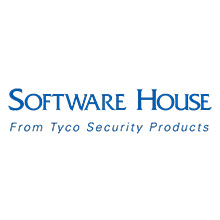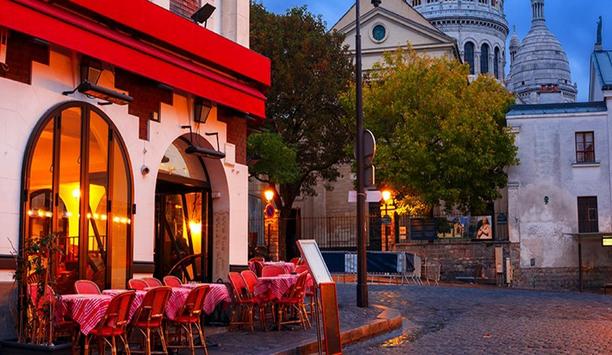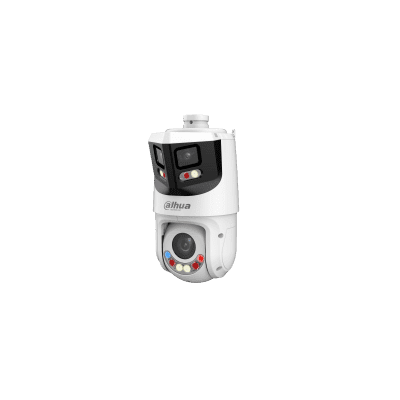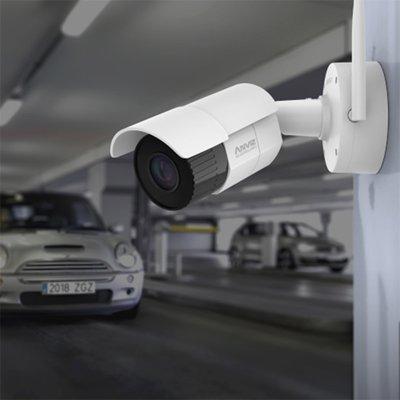 |
| Software House’s NetVue allows integration of access system with the Intellex units |
A fire alarm led to the evacuation of employees and members of the public from the main government executive building in New York’s Westchester County. Using a new integrated security system, public safety officials were able to check video associated with the event. Within seconds they saw that an elderly woman had mistakenly pulled an alarm, thinking it was necessary to enter an adjacent restroom. Those who had already left the building were allowed to quickly return.
While the event turned out to be a non-emergency, county officials were happy to see that their multi-million dollar investment had worked as planned. Westchester County, located just north of New York City in southern New York state, is home to nearly one million residents.
The county serves as corporate headquarters for a number of well-known companies, including PepsiCo and IBM. White Plains is the county seat.
About two years ago, the county began making plans to update and increase security at its main center in White Plains. The terrorist attacks on New York City changed the timetable.
“Even before September 11, we felt that as the operator of governmental buildings, we needed to improve the security in and around our facilities,” said Salvatore J. Carrera, Westchester’s director of economic development–real estate. He also oversees the county’s Department of Public Safety.
“After September 11, we listened to the warnings from federal agencies and changed plans that were slated to be implemented within a few years and moved them to the forefront,” Carrera said.
The county turned to a White Plains-based systems integrator, Antar-Com Incorporated (ACI), which in less than four months completed drawings and oversaw the installation of electronic security equipment to protect two county buildings and an adjoining parking structure.
“We can easily expand this system to more facilities or add biometrics if we want. This is a good, long-term investment for the county” |
The extensive system, which includes video surveillance cameras, digital video recorders, barrier turnstiles, x-ray equipment, intercoms and metal detectors is all integrated through a C•CURE® 800 access control system and NetVue video integration software by Lexington, Mass.-based Software House, part of Tyco International’s Fire & Security Division.
“County officials were concerned about having a system in place quickly so we went from drawings to a completed project within four months,” said Isac Tabib, a principal at ACI and the Vice President of Technology. “The design was continually enhanced as we introduced the county to all of the system’s capabilities.”
“I was not going to buy something that would be obsolete within six months or a year,” Carrera said. “We can easily expand this system to more facilities or add biometrics if we want. This is a good, long-term investment for the county.”
 |
| Software House’s C•CURE Vision badging system produces photo IDs for employees |
The new system includes the Michaelian Office Building (MOB), a nine-story facility that houses the offices for the county executive, board of legislators and a number of departments such as public works, planning and public safety. Major components of the system have also been extended to other buildings housing offices for the county clerk, the district attorney, courtrooms and several other county departments.
The MOB is generally open to the public on weekdays from 9 a.m. to 5 p.m. The access system is used to automatically lock and unlock the public entrance.
Visitors enter through one door and are required to show a picture identification card (usually a driver’s license). A public safety officer uses a driver’s license scanner by Bartizon from Yonkers, N.Y. and Passage Point software from San Jose, Calif.-based STOPware to create temporary ID badges. The scanner and software integrates with the C•CURE system. Visitors are then directed through a metal detector, while items such as purses and attaché cases are placed on a conveyor belt and examined by x-ray.
A temporary badge is issued to visitors to be worn while within the building. When ready to exit the building, visitors are required to swipe the badge at a turnstile from Lillington, N.C.-based Tomsed Corp. The badge is logged out of the C•CURE system and is immediately invalidated. The county uses a C•CURE Vision badging system to produce photo IDs for employees. The access system permits a variety of time, day and area restrictions for each badge. Currently the county maintains about 25 different clearance codes.
Employees may enter the building through specific access points, each requiring that a valid ID badge be read by proximity card reader for entry. The system also integrates Intercoms from ValCom Inc. of Roanoke, Virg., located within the facility’s parking garage in the event an employee needs to contact a public safety officer in the main security control room.
By the time ACI was finished, it had connected the C•CURE 800 to more than 175 card readers and 23 Software House apC-/8X panels. The host computer downloads information into each panel’s memory.
Tabib said the quick installation was also helped by the use of a Universal Interface Board (UIB), from ITG of Oyster Bay, N.Y. The UIB, a device used in many of ACI’s major installations, links field devices, such as electrified locks and the apCs. The boards use color-coded wires and plugs to simplify system installation and maintenance. A total of 21 LEDs on each board indicate the status of the various connections, while 24 fuses protect the apCs from damage during electrical spikes.
“The system is fantastic. It is a major deterrent. It turned out to be a much more sophisticated system than we had originally anticipated needing" |
From the security control room, officers monitor the intercoms, as well as the access and video surveillance systems 24 hours a day, seven days a week. More than 70 fixed and dome cameras from Phillips monitor the entrances, hallways, parking areas and ground-level airway vents. The video is monitored on 13 20-inch and six nine-inch color monitors from Phillips. All video is recorded on Intellex digital video management systems from San Diego-based American Dynamics of Tyco’s Fire & Security Division.
Software House’s NetVue allows for integration of the access system with the Intellex units. For example, a public safety officer can double click on icons next to events such as “Door Propped Open” which are generated on the C•CURE monitoring station. When the NetVue window opens, the officer can view live video or rewind to the point where the event occurred. Also, the video clips can be easily saved as .avi files for archiving or emailing.
County officials are also preparing a single point of entry whereby all goods coming into the building – including mail, packages, even lunches – will be screened by an x-ray machine.
Carrera said that at first county employees were a little suspicious of such a comprehensive system. But now that it has been in place for several months, they have adjusted and appreciate the added security afforded them. And he said he has not had one complaint from the public.
Carrera said the courthouse lobby is now being renovated. All visitors currently pass through a metal detector to enter the building. Employees are also required to carry photo ID cards. Within the near future, a visitor pass system, similar to that used in the MOB, will be installed, he said.
County officials are preparing a report with recommendations on which a number of additional county-operated sites will also undergo a security upgrade. By using the C•CURE as a standard, Carrera said, the county will have the ability to link any and/or all of the facilities into the central server or operate each facility as a stand-alone C•CURE system.
He said he was extremely pleased with the way the entire security system has functioned and praised ACI for its prompt work and continued support, including training.
“The system is fantastic,” Carrera said. “It is a major deterrent. It turned out to be a much more sophisticated system than we had originally anticipated needing. But, I feel very confident we have done the best we can to protect our employees and citizens.”

















